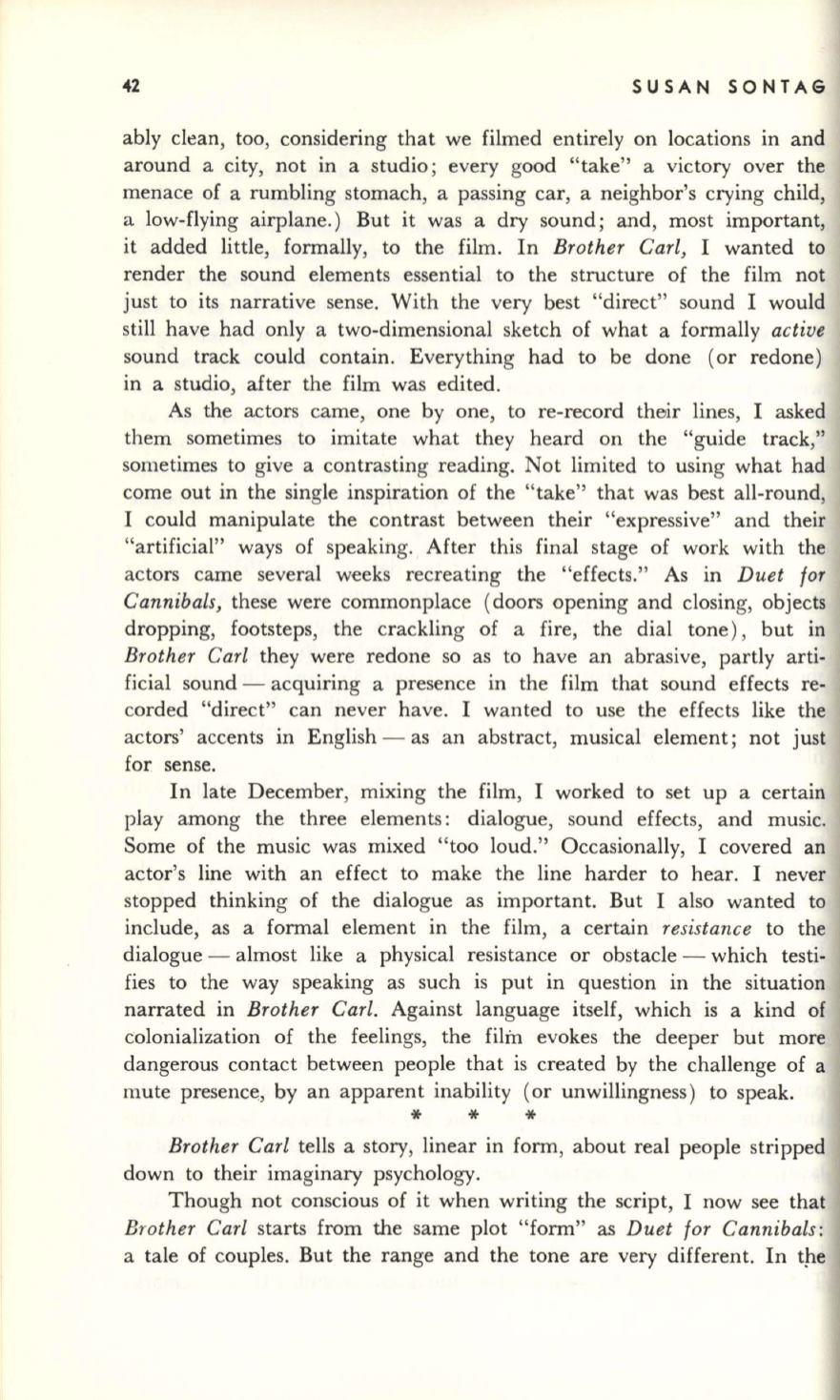
SUSAN SONTAG
ably clean, too, considering that we filmed entirely on locations in and
around a city, not in a studio ; every good " take" a victory over the
menace of a rumbling stomach, a passing car, a neighbor's crying child,
a low-flying airplane. ) But it was a dry sound ; and, most important,
it added little, formally, to the film . In
Brother Carl,
I wanted to
render the sound elements essential to the structure of the film not
just to its narrative sense. With the very best "direct" sound I would
still have had only a two-dimensional sketch of what a formally
active
sound track could contain. Everything had to be done (or redone )
in a studio, after the film was edited.
As the actors came, one by one, to re-record their lines, I asked
them sometimes to imitate what they heard on the "guide track,"
sometimes to give a contrasting reading. Not limited to using what had
come out in the single inspiration of the " take" that was best all-round,
I could manipulate the contrast between their " expressive" and their
"artificial" ways of speaking. After this final stage of work with the
actors came several weeks recreating the "effects." As in
Duet for
Cannibals,
these were commonplace (doors opening and closing, objects
dropping, footsteps, the crackling of a fire, the dial tone ), but in
Brother Carl
they were redone so as to have an abrasive, partly arti–
ficial sound - acquiring a presence in the film that sound effects re–
corded "direct" can never have. I wanted to use the effects like the
actors' accents in English - as an abstract, musical element ; not just
for sense.
In late December, mixing the film, I worked to set up a certain
play among the three elements : dialogue, sound effects, and music.
Some of the music was mixed " too loud." Occasionally, I covered an
actor's line with an effect to make the line harder to hear. I never
stopped thinking of the dialogue as important. But I also wanted to
include, as a formal element in the film, a certain
resistance
to the
dialogue - almost like a physical resistance or obstacle - which testi–
fies to the way speaking as such is put in question in the situation
narrated in
Brother Carl.
Against language itself, which is a kind of
colonialization of the feelings, the film evokes the deeper but more
dangerous contact between people that is created by the challenge of a
mute presenCe, by an apparent inability (or unwillingness ) to speak.
* * *
Brother Carl
tells a story, linear in form, about real people stripped
down to their imaginary psychology.
Though not conscious of it when writing the script, I now see that
Brother Carl
starts from the same plot " form" as
Duet for Cannibals:
a tale of couples. But the range and the tone are very different. In
tpe


